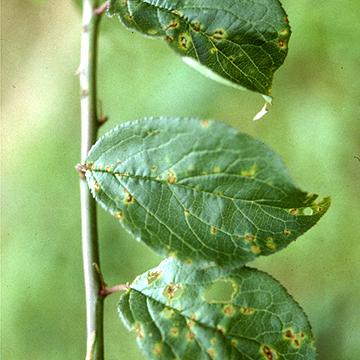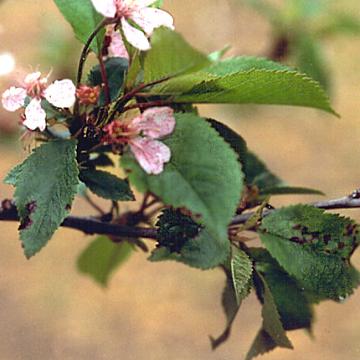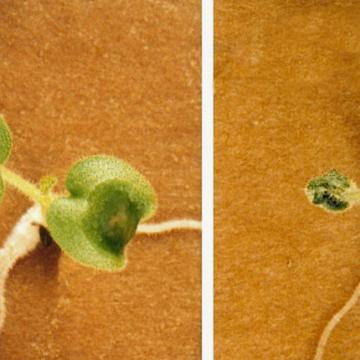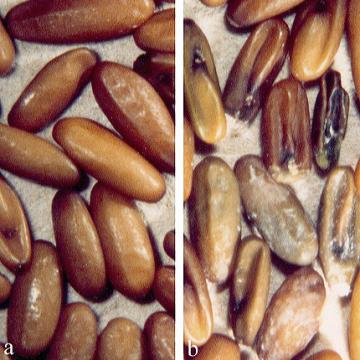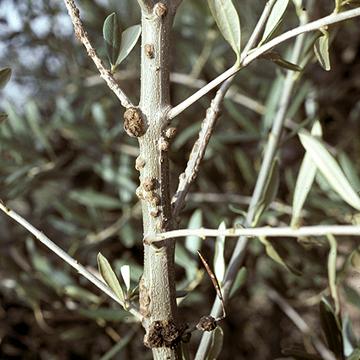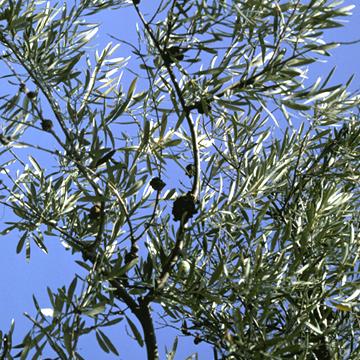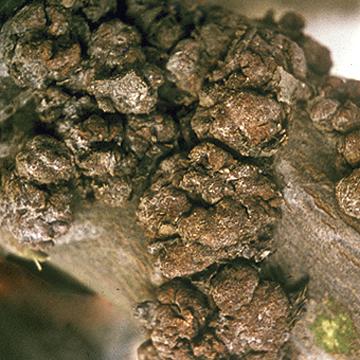DISEASE: Bacterial canker (Leaf spot)
HOST: Mume (Japanese apricot)
Leaves with spots surrounded by yellow halos.
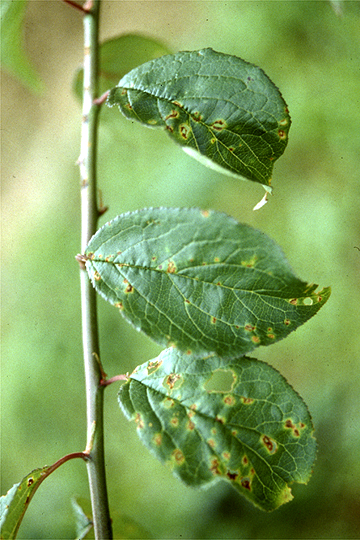
Bacterial canker (Leaf spot) | Mume (Japanese apricot)
DISEASE: Bacterial canker (Leaf spot)
HOST: Mume (Japanese apricot) (Prunus mume)
PATHOGEN: Pseudomonas syringae pv. morsprunorum
SOURCE: M. Goto
DISEASE: Bacterial canker
HOST: Cherry
Cherry with necrotic internal tissues and external symptoms of ooze (gummosis) caused by systemic infection.
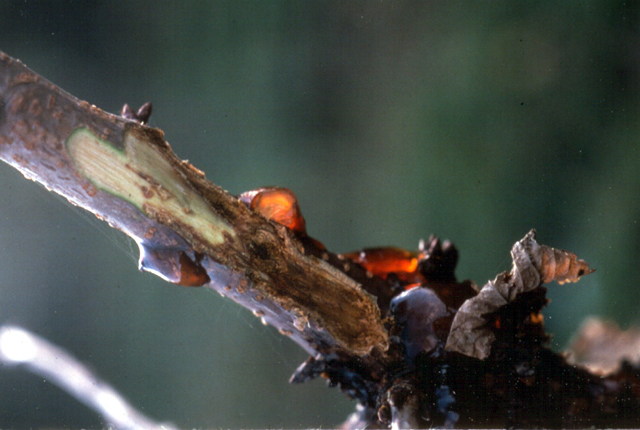
Bacterial canker | Cherry
DISEASE: Bacterial canker
HOST: Cherry (Prunus avium)
PATHOGEN: Pseudomonas syringae pv. morsprunorum
SOURCE: D. Funk, A. Alvarez
DISEASE: Bacterial canker
HOST: Cherry
Systemic infection of petioles and leaves.
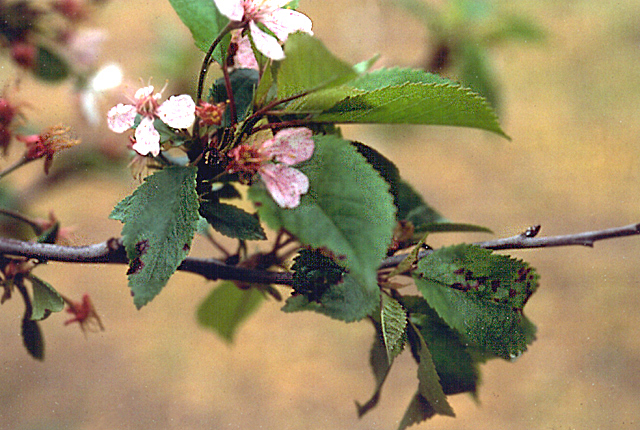
Bacterial canker | Cherry
DISEASE: Bacterial canker
HOST: Cherry (Prunus avium)
PATHOGEN: Pseudomonas syringae pv. morsprunorum
SOURCE: D. Funk, A. Alvarez
DISEASE: Bacterial seed and seedling rot
HOST: Geranium
Cotyledons with water-soaked spots.
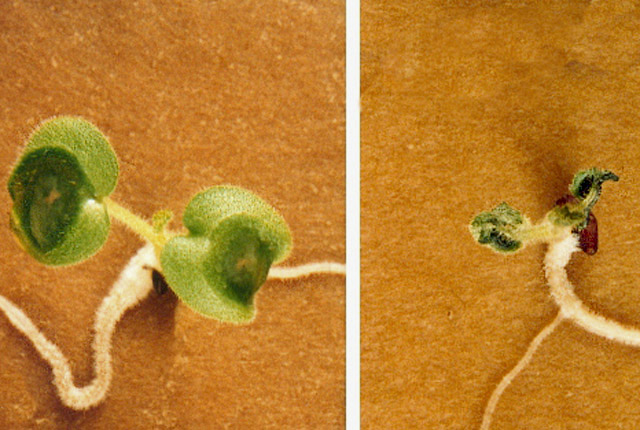
Bacterial seed and seedling rot | Geranium
DISEASE: Bacterial seed and seedling rot
HOST: Geranium (Pelargonium sp.)
PATHOGEN: Paenibacillus sp.
SOURCE: A. Magyarosy, D. Thomas
DISEASE: Bacterial seed and seedling rot
HOST: Geranium
Rotted and discolored seeds (right). Healthy seeds (left).
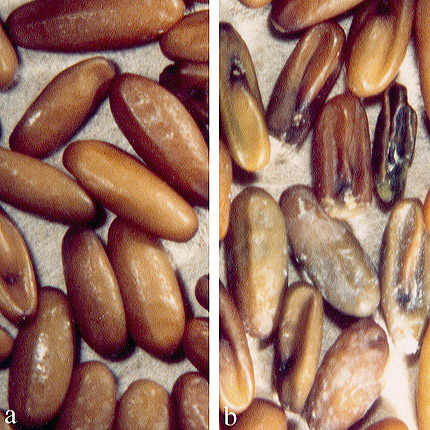
Bacterial seed and seedling rot | Geranium
DISEASE: Bacterial seed and seedling rot
HOST: Geranium (Pelargonium sp.)
PATHOGEN: Paenibacillus sp.
SOURCE: A. Magyarosy, D. Thomas
DISEASE: Olive knot
HOST: Olive
Multiple infections of young stems. The bacterium invades vascular tissues during certain times of the year and may be isolated from branches that appear healthy.
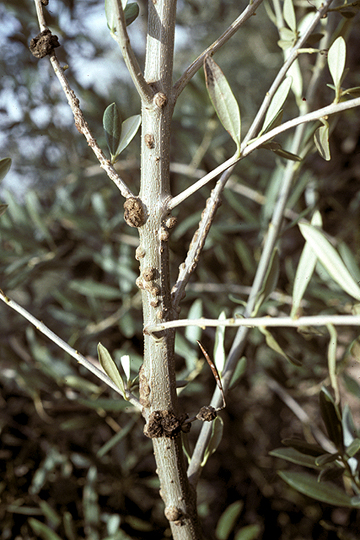
Olive knot | Olive
DISEASE: Olive knot
HOST: Olive (Olea europaea)
PATHOGEN: Pseudomonas savastanoi pv. savastanoi
SOURCE: M. Schroth
DISEASE: Olive knot
HOST: Olive
Tree with knots/galls on branches along with twig dieback, which is associated with knots. Fusarium and Diplodia spp. infect through knots and are thought to be main reason for dieback.
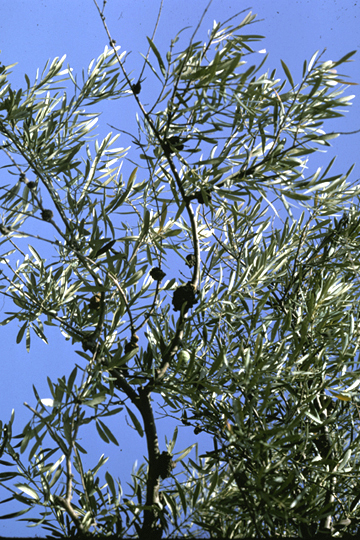
Olive knot | Olive
DISEASE: Olive knot
HOST: Olive (Olea europaea)
PATHOGEN: Pseudomonas savastanoi pv. savastanoi
SOURCE: M. Schroth


